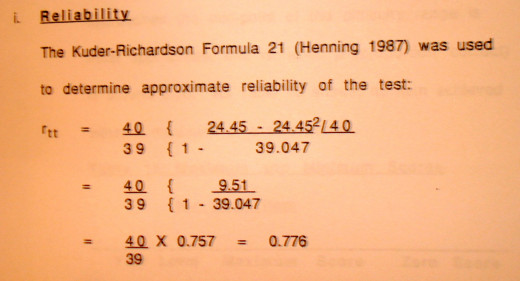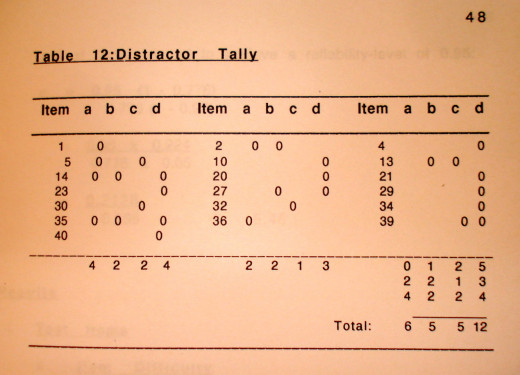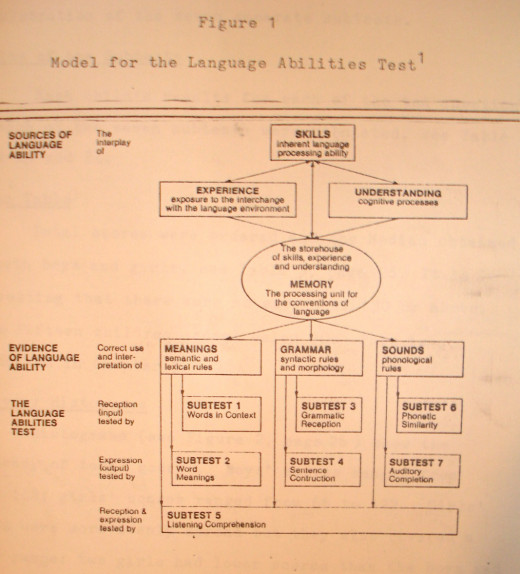Report Writing: How to Use Tables, Figures and Computer Materials
Additional Information that Supports a Report
The writing of a report is frequently only part of the presentation. The additional information that supports a report may constitute a small component, or it may actually be larger than the written text of the report. This information may be provided in the form of tables, figures and computer materials.
Tables, Figures and Computer Materials may need to be to used and it can be confusing knowing how to present these so they can be used to their best advantage and support your writing in the best possible manner.
Report Writing and the Use of Tables
There are basic rules for using tables in a paper and these can be helpful if followed, especially in the presentation of statistics.
- If there is statistical data that needs to be shown, it helps if this is presented in the form of tables or graphs, or even a combination of both.
- If the statistical facts are simple, they may be tabulated informally.
- If the writer is able to fit the statistical data into the text in a smooth and comfortable manner then this is the best way for it to be presented.

Report Writing and the Use of Figures
The term 'figure' covers a wide range of material that may need to be presented in a report. It covers any kind of graphic illustration that the writer may desire to insert, even computer print-outs.
The term 'figure' may include such things as charts, diagrams, drawings, maps, blueprints, photographs and graphs.

Report Writing and the Use of Graphs
There is a variety of graphs that can be utilized and these need to be considered separately as they differ in the reason for their use and way they are used.
There are three main types: line graphs, bar graphs and area and volume graphs.
1. Line Graphs: In these, two or more lines are plotted on the same chart. Line graphs can provide comparison between series of date that is easily seen at a glance.
2. Bar Graphs: The relationship between data or groups of data can be shown and observed in the arrangement of thickened lines or bars. Bar graphs may be presented in two different ways.
- The bars may be of different lengths to provide direct comparison of the data.
- The bars may be the same length and incorporate shaded subdivisions. This method also allows comparison of the data being examined.
3. Area and Volume Graphs: Area and volume graphs are used where graphic representation of area or volume is provided. These graphs help to support the relationships between the quantities that are being presented in the written report.
Report Writing and the Use of Computer Materials
Again, computer materials may be minimal or they may be several pages long.
Before adding computer materials to a paper it should be ascertained that the data they display will support the information being provided or the theory being proposed in the report. The computer materials may be added in different ways.
- Brief Computer Materials: These may be added as footnotes.
- Longer Computer Materials: These should be added as separate pages in the report.
- Lengthy Computer Materials: These may be placed in an appendix at the end of the report.
Whichever way the computer materials are shown they need to be referred to and the reason for their use explained in the body of the paper.
A Final Note
It should be noted that, while the addition of tables, figures, graphs and computer materials can add to the impact of a written report, they need to be used wisely and thoughtfully.
The writer or researcher should make a critical analysis of the data presented so that it is seen to have been clearly incorporated in the paper for a purpose. Otherwise it becomes unrelated to the topic, and will be deemed irrelevant and useless by those who read the report.

Report Writing Links
- How to Write a Formal Report
The main elements of a formal report or a dissertation contain certain rules and there may be requirements in different institutions and disciplines. The basics are shown here and could be useful in helping to construct a variety of report papers. - How to Write Footnotes in a Report
Includes the reasons for writing footnotes, how to cite references when citing books, and explanation of terms used in footnote/endnote citation and some useful extra hints on this often overlooked necessity for the student and the serious writer. - Proper Use of Quotation Marks
There are many rules that need to be followed when using quotations in writing. Plagiarism is not only a bad thing to do, it is illegal. Obtaining copyright can be difficult and many of these requirements can absorb much time, but it is necessary.



